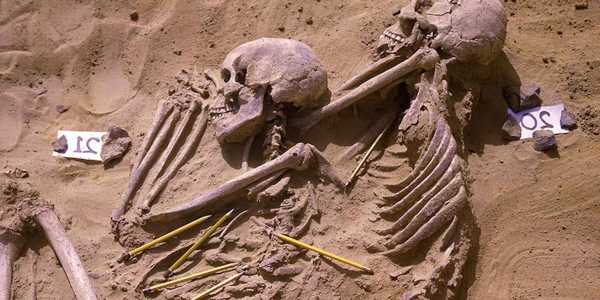
- Jebel Sahaba is one of the oldest known sites of mass conflict, dating back over 13,000 years.
- New research shows the deaths were caused by a series of violent clashes, rather than a single battle.
- This long-lasting war was likely a consequence of an abrupt change in climate around that time.
- See more stories on Insider’s business page.
A prehistoric cemetery, one of the earliest known examples of mass conflict amongst humans, was caused by an unrelenting series of clashes, rather than a single battle, according to new research.
Climate change likely drove these events, Dr. Isabelle Crevecoeur, the lead author of the study and a researcher at the University of Bordeaux, told Insider.
The findings were published on Thursday in the peer-reviewed journal Scientific Reports.
The Jebel Sahaba site, a cemetery in the Nile Valley discovered in the 1960s, is one of the earliest sites displaying an event of mass violence on humans, New Scientist reported.
The remains, which were dated to be more than 13,000 years old, show signs of injuries from weapons, spears, and arrows.
It is often held up as an example of early emergence of violence and organized warfare triggered by territorial disputes, the scientists said in the study.
New analysis of the remains found more than 100 lesions that had been previously undocumented, some of which showed signs of healing. The remains of sixteen people had both healed and unhealed lesions, the scientists found.
This suggests that these deaths came after a series of raids, skirmishes, and ambushes spread months or years apart, rather than a singular battle.
“That is also a war. It’s just not the concept of war that we have now,” Crevecoeur said.
A war caused by climate change?
One of the most likely hypothesis is that tensions arose as a consequence of extreme weather changes.
The area went from a very arid climate to very moist climate between the end the glacial period, around 20,000 years ago, to the beginning of the African humid period, about 15,000 years ago, Crevecoeur said.
“The transition between both extreme was not gradual. Severe flooding of the Nile are recorded during this period that seems to stabilized only after 11,000 years ago,” she said.
This caused humans to concentrate in what must have been a refuge area at that time, causing competition for resources, a press release accompanying the study said.
Cultural tensions might have also played a part, as previous studies had also shown that humans at that time probably had a sense of group identity, she said.
“If you add cultural identity to climate pressure and maybe stresses to access to basic resources, you really have the roots to generate conflict between the community,” Crevecoeur said.
The scientists also found that male and female remains were evenly affected by the lesions, which Crevecoeur said was a surprise.
“In most ethnoarchaeological examples of similar type of conflict, the number of male individuals exhibiting trauma is always significantly higher than women,” she said.
The only difference is that most of the women had more fractures to the forearm, while men had more fractures on their hands.
“This is the kind of injury that you have in close combat, and these differences may reflect instinctive reaction in these situation when men will maybe more prone to engage the attacker when women might try to protect themselves,” Crevecoeur said.
Source: Read Full Article